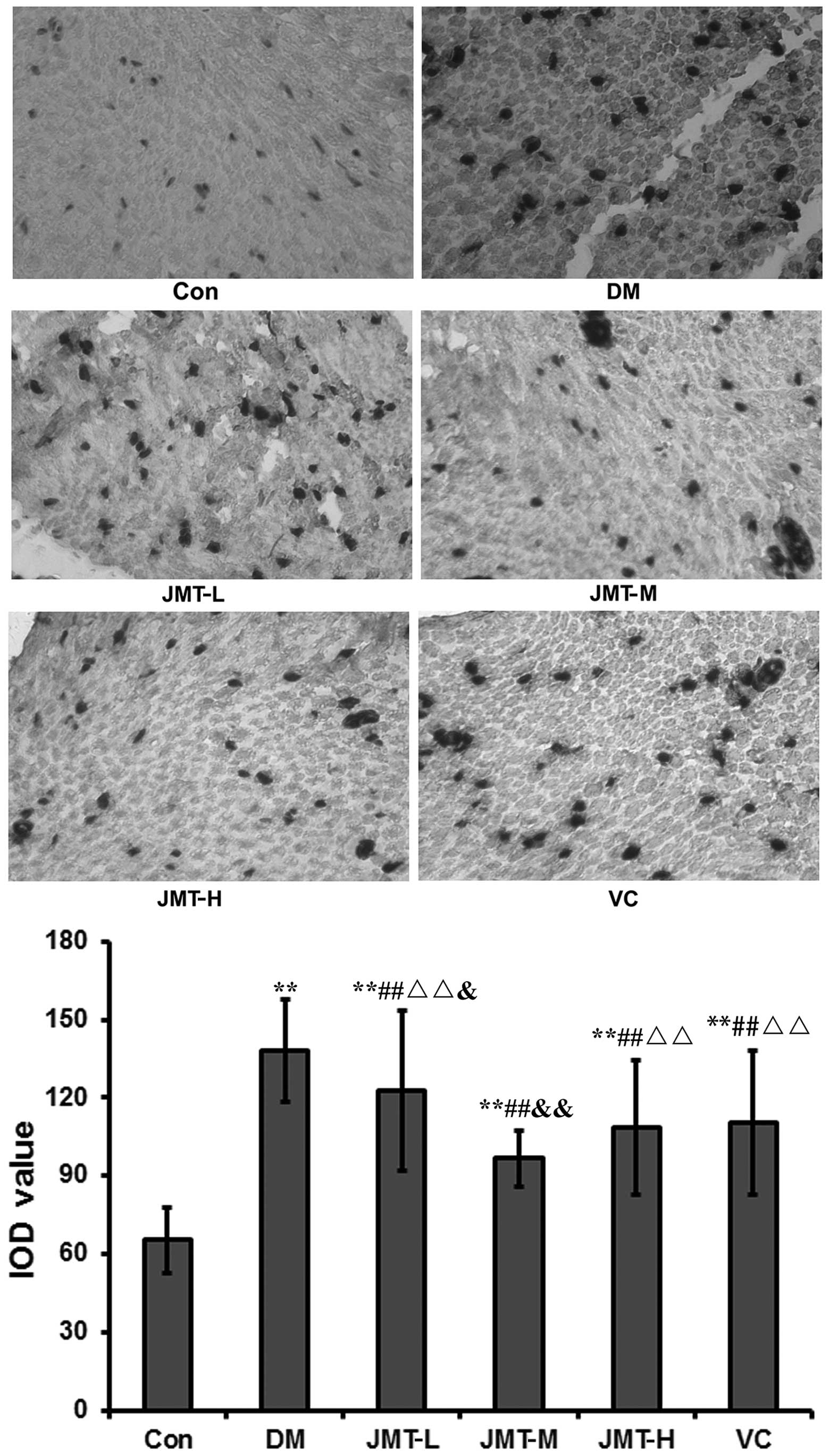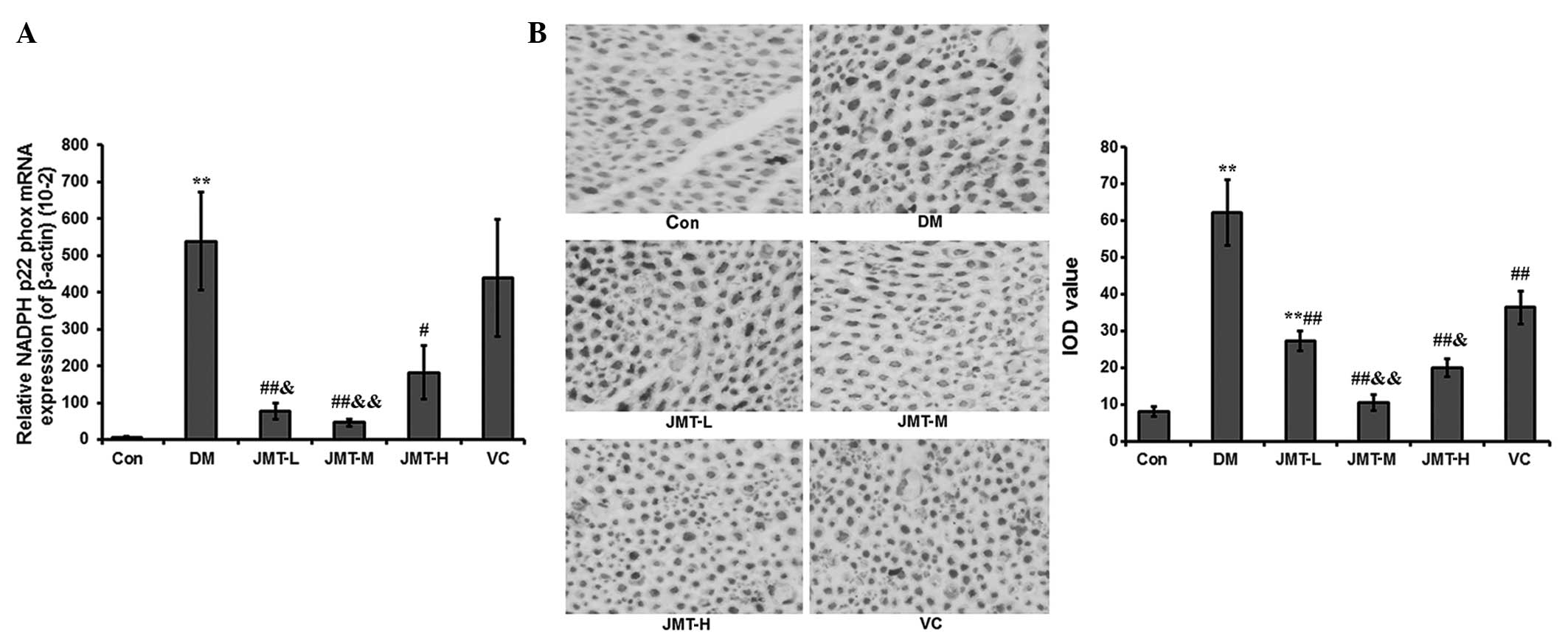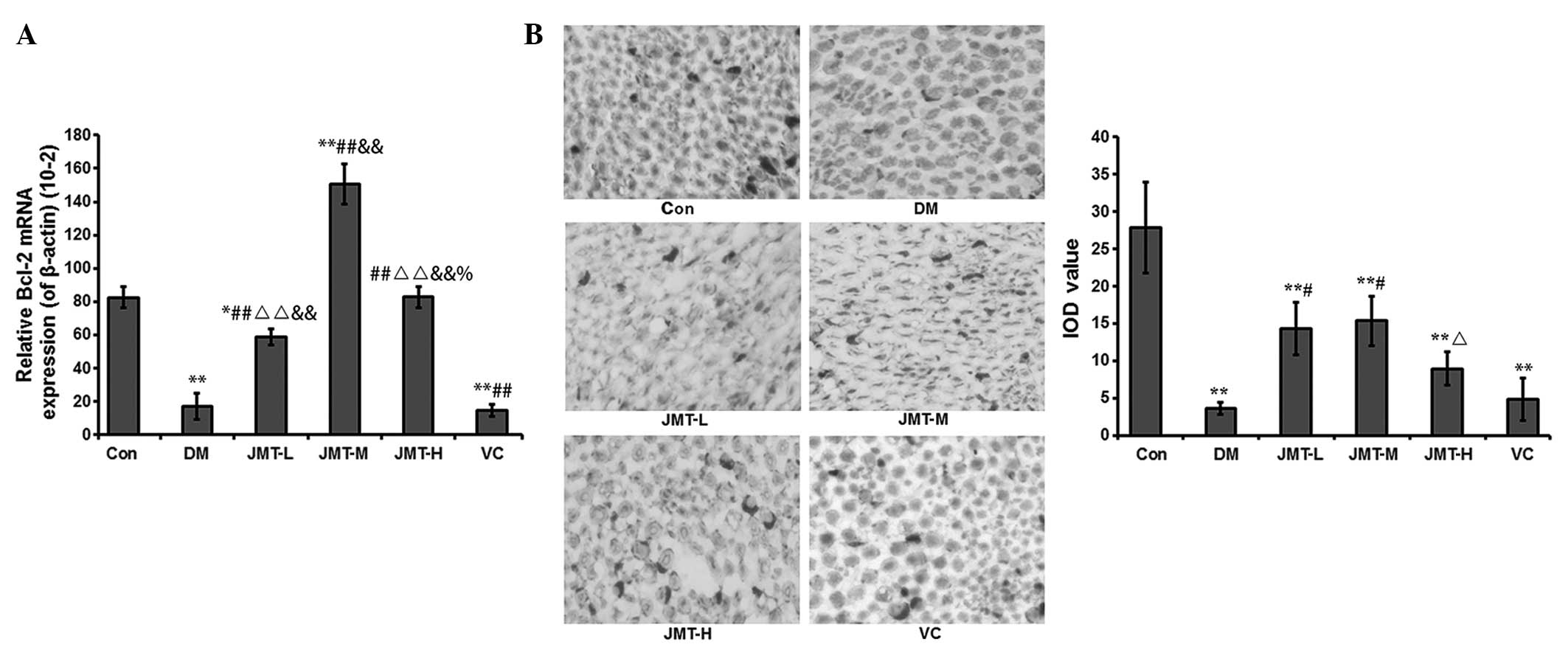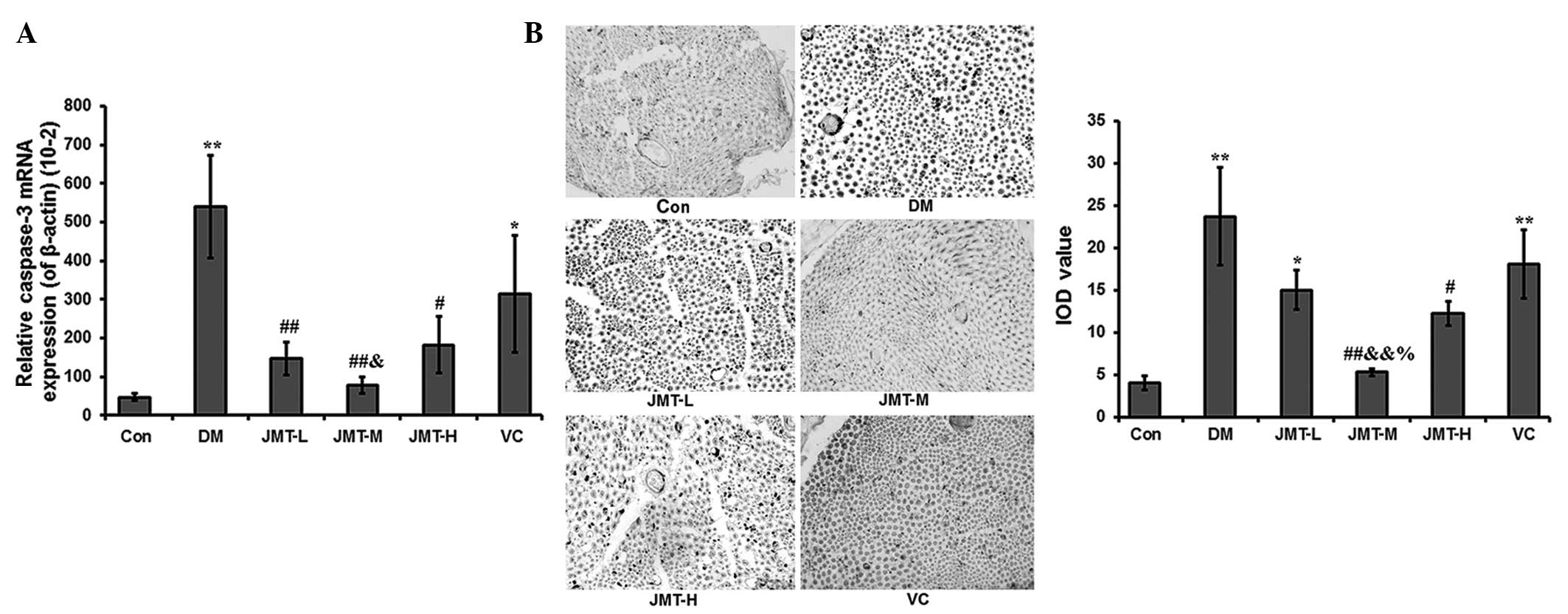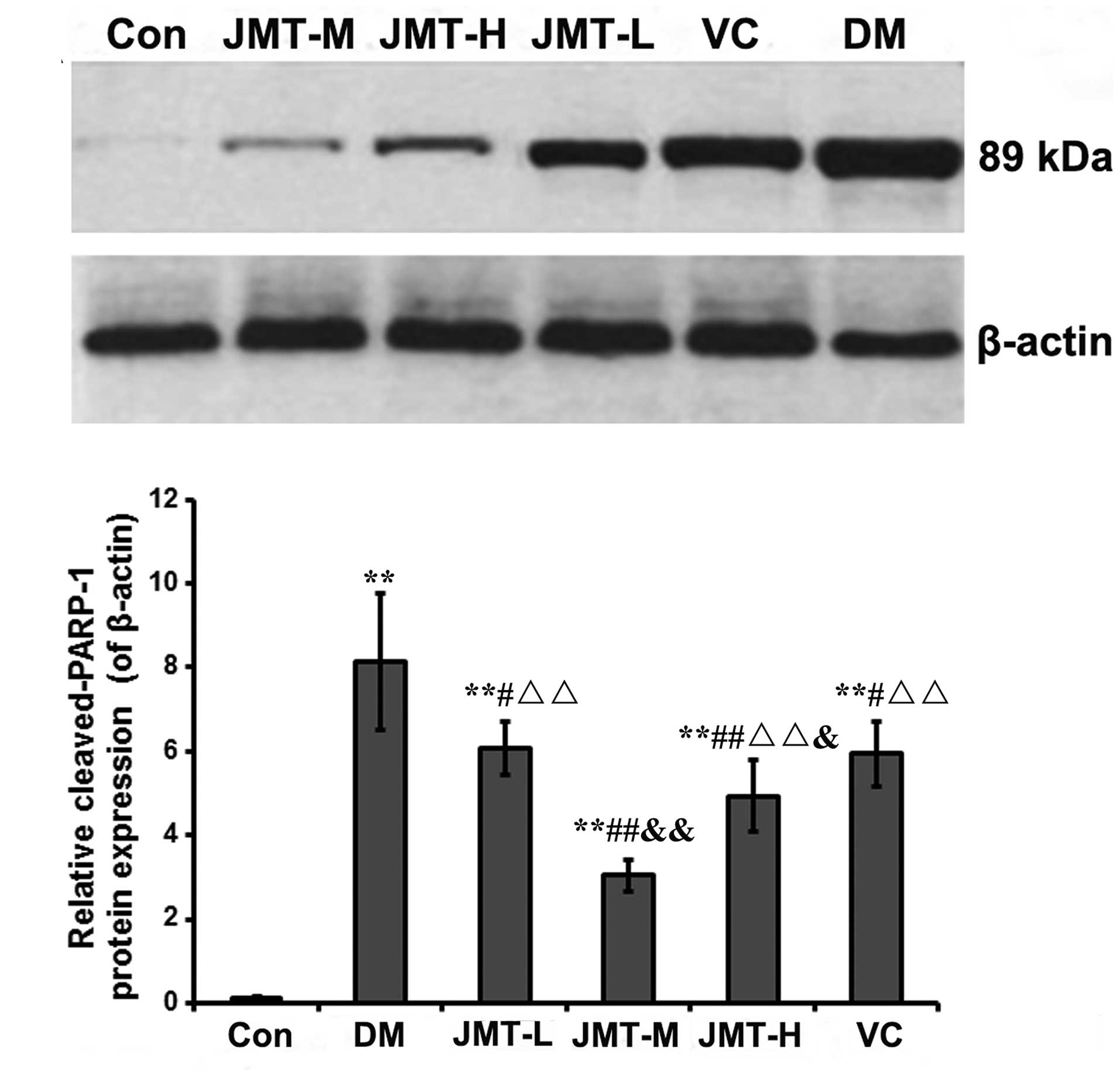|
1
|
Dobretsov M, Romanovsky D and Stimers JR:
Early diabetic neuropathy: Triggers and mechanisms. World J
Gastroenterol. 13:175–191. 2007. View Article : Google Scholar : PubMed/NCBI
|
|
2
|
Dyck PJ, Kratz KM, Karnes JL, et al: The
prevalence by staged severity of various types of diabetic
neuropathy, retinopathy and nephropathy in a population-based
cohort: The Rochester Diabetic Neuropathy Study. Neurology.
43:817–824. 1993. View Article : Google Scholar : PubMed/NCBI
|
|
3
|
Tesfaye S: Advances in the management of
diabetic peripheral neuropathy. Curr Opin Support Palliat Care.
3:136–143. 2009. View Article : Google Scholar : PubMed/NCBI
|
|
4
|
Edwards JL, Vincent AM, Cheng HT and
Feldman EL: Diabetic neuropathy: Mechanisms to management.
Pharmacol Ther. 120:1–34. 2008. View Article : Google Scholar : PubMed/NCBI
|
|
5
|
Genuth S: Insights from the diabetes
control and complications trial/epidemiology of diabetes
interventions and complications study on the use of intensive
glycemic treatment to reduce the risk of complications of type 1
diabetes. Endocr Pract. 12 Suppl:1:34–41. 2006. View Article : Google Scholar
|
|
6
|
Vinik A, Emir B, Cheung R and Whalen E:
Relationship between pain relief and improvements in patient
function/quality of life in patients with painful diabetic
peripheral neuropathy or postherpetic neuralgia treated with
pregabalin. Clin Ther. 35:612–623. 2013. View Article : Google Scholar : PubMed/NCBI
|
|
7
|
Nicholson B: Differential diagnosis:
Nociceptive and neuropathic pain. Am J Manag Care. 12
(Suppl):S256–S262. 2006.PubMed/NCBI
|
|
8
|
Shakher J and Stevens MJ: Update on the
management of diabetic polyneuropathies. Diabetes Metab Syndr Obes.
4:289–305. 2011.PubMed/NCBI
|
|
9
|
Russell JW, Sullivan KA, Windebank AJ,
Herrmann DN and Feldman EL: Neurons undergo apoptosis in animal and
cell culture models of diabetes. Neurobiol Dis. 6:347–363. 1999.
View Article : Google Scholar : PubMed/NCBI
|
|
10
|
Allen DA, Yaqoob MM and Harwood SM:
Mechanisms of high glucose-induced apoptosis and its relationship
to diabetic complications. J Nutr Biochem. 16:705–713. 2005.
View Article : Google Scholar : PubMed/NCBI
|
|
11
|
El Boghdady NA and Badr GA: Evaluation of
oxidative stress markers and vascular risk factors in patients with
diabetic peripheral neuropathy. Cell Biochem Funct. 30:328–334.
2012. View
Article : Google Scholar : PubMed/NCBI
|
|
12
|
Figueroa-Romero C, Sadidi M and Feldman
EL: Mechanisms of disease: The oxidative stress theory of diabetic
neuropathy. Rev Endocr Metab Disord. 9:301–314. 2008. View Article : Google Scholar : PubMed/NCBI
|
|
13
|
Kasznicki J, Kosmalski M, Sliwinska A, et
al: Evaluation of oxidative stress markers in pathogenesis of
diabetic neuropathy. Mol Biol Rep. 39:8669–8678. 2012. View Article : Google Scholar : PubMed/NCBI
|
|
14
|
Schmeichel AM, Schmelzer JD and Low PA:
Oxidative injury and apoptosis of dorsal root ganglion neurons in
chronic experimental diabetic neuropathy. Diabetes. 52:165–171.
2003. View Article : Google Scholar : PubMed/NCBI
|
|
15
|
Sun LQ, Zhao J, Zhang TT, et al:
Protective effects of Salvianolic acid B on Schwann cells apoptosis
induced by high glucose. Neurochem Res. 37:996–1010. 2012.
View Article : Google Scholar : PubMed/NCBI
|
|
16
|
Hernández-Beltrán N, Moreno CB and
Gutiérrez-Álvarez AM: Contribution of mitochondria to pain in
diabetic neuropathy. Endocrinol Nutr. 60:25–32. 2013. View Article : Google Scholar : PubMed/NCBI
|
|
17
|
Piao Y and Liang X: Chinese medicine in
diabetic peripheral neuropathy: Experimental research on nerve
repair and regeneration. Evid Based Complement Alternat Med.
2012:1916322012. View Article : Google Scholar : PubMed/NCBI
|
|
18
|
Shi Y, Liang XC, Wu QL, et al: Effects of
Jinmaitong Capsule on ciliary neurotrophic factor in sciatic nerves
of diabetes mellitus rats. Chin J Integr Med. 19:104–111. 2013.
View Article : Google Scholar : PubMed/NCBI
|
|
19
|
Qu L, Liang XC, Zhang H, Wu QL, Sun LQ and
Gu B: Effect of Jinmaitong serum on the proliferation of rat
Schwann cells cultured in high glucose medium. Chin J Integr Med.
14:293–297. 2008. View Article : Google Scholar : PubMed/NCBI
|
|
20
|
Kim J, Yokoyama K and Araki S: The effects
of Ginkgo biloba extract (GBe) on axonal transport microvasculature
and morphology of sciatic nerve in streptozotocin-induced diabetic
rats. Environ Health Prev Med. 5:53–59. 2000. View Article : Google Scholar : PubMed/NCBI
|
|
21
|
Varvarovská J, Racek J, Stetina R, et al:
Aspects of oxidative stress in children with type 1 diabetes
mellitus. Biomed Pharmacother. 58:539–545. 2004. View Article : Google Scholar : PubMed/NCBI
|
|
22
|
Pop-Busui R, Sima A and Stevens M:
Diabetic neuropathy and oxidative stress. Diabetes Metab Res Rev.
22:257–273. 2006. View
Article : Google Scholar : PubMed/NCBI
|
|
23
|
Bedard K and Krause KH: The NOX family of
ROS-generating NADPH oxidases: Physiology and pathophysiology.
Physiol Rev. 87:245–313. 2007. View Article : Google Scholar : PubMed/NCBI
|
|
24
|
Toyokuni S: Reactive oxygen
species-induced molecular damage and its application in pathology.
Pathol Int. 49:91–102. 1999. View Article : Google Scholar : PubMed/NCBI
|
|
25
|
Obrosova IG, Xu W, Lyzogubov VV, et al:
PARP inhibition or gene deficiency counteracts intraepidermal nerve
fiber loss and neuropathic pain in advanced diabetic neuropathy.
Free Radic Biol Med. 44:972–981. 2008. View Article : Google Scholar : PubMed/NCBI
|
|
26
|
Oliver FJ, de la Rubia G, Rolli V,
Ruiz-Ruiz MC, de Murcia G and Murcia JM: Importance of
poly(ADP-ribose) polymerase and its cleavage in apoptosis. Lesson
from an uncleavable mutant. J Biol Chem. 273:33533–33539. 1998.
View Article : Google Scholar : PubMed/NCBI
|
|
27
|
Lamkanfi M, Festjens N, Declercq W, Vanden
Berghe T and Vandenabeele P: Caspases in cell survival,
proliferation and differentiation. Cell Death Differ. 14:44–55.
2007. View Article : Google Scholar : PubMed/NCBI
|
|
28
|
Qin W, Hu J, Guo M, et al: BNIPL-2, a
novel homologue of BNIP-2, interacts with Bcl-2 and Cdc42GAP in
apoptosis. Biochem Biophys Res Commun. 308:379–385. 2003.
View Article : Google Scholar : PubMed/NCBI
|
|
29
|
Fuchs D, Birklein F, Reeh PW and Sauer SK:
Sensitized peripheral nociception in experimental diabetes of the
rat. Pain. 151:496–505. 2010. View Article : Google Scholar : PubMed/NCBI
|
|
30
|
Dobretsov M, Hastings SL, Romanovsky D,
Stimers JR and Zhang JM: Mechanical hyperalgesia in rat models of
systemic and local hyperglycemia. Brain Res. 960:174–183. 2003.
View Article : Google Scholar : PubMed/NCBI
|
|
31
|
Vivancos GG, Verri WA Jr, Cunha TM, et al:
An electronic pressure-meter nociception paw test for rats. Braz J
Med Biol Res. 37:391–399. 2004. View Article : Google Scholar : PubMed/NCBI
|
|
32
|
Chaplan SR, Bach FW, Pogrel JW, Chung JM
and Yaksh TL: Quantitative assessment of tactile allodynia in the
rat paw. J Neurosci Methods. 53:55–63. 1994. View Article : Google Scholar : PubMed/NCBI
|
|
33
|
Farghaly HS, Abd-Ellatief RB, Moftah MZ,
Mostafa MG, Khedr EM and Kotb HI: The effects of dexmedetomidine
alone and in combination with tramadol or amitriptyline in a
neuropathic pain model. Pain Physician. 17:187–195. 2014.PubMed/NCBI
|
|
34
|
Wang PY, Liang XC, Zhang H, et al: Effect
of serum containing Jinmaitong Capsule on rats' Schwann cell
apoptosis induced by high glucose concentration. Chin J Integr Med.
19:517–523. 2013. View Article : Google Scholar : PubMed/NCBI
|
|
35
|
Pazdro R and Burgess JR: The role of
vitamin E and oxidative stress in diabetes complications. Mech
Ageing Dev. 131:276–286. 2010. View Article : Google Scholar : PubMed/NCBI
|
|
36
|
Vincent AM, Edwards JL, Sadidi M and
Feldman EL: The antioxidant response as a drug target in diabetic
neuropathy. Curr Drug Targets. 9:94–100. 2008. View Article : Google Scholar : PubMed/NCBI
|
|
37
|
Ji JL and Chen DS: Experiment study of
nourishing yin, invigorating qi, extinguishing wind, promoting
blood circulation and draining collateral method of the sciatic
nerve Schwann cells apoptosis of diabetic rats. Zhongguo Zhong Yi
Ji Zheng. 18:1304–1306. 2009.(In Chinese).
|
|
38
|
Liu XY, Zhang YY and Zhang JQ: Effect of
astragalus, salvia, yam and its compound on apoptosis of Schwann
cells co-cultured with endothelial cells in high glucose. Zhong Yao
Yao Li Yu Lin Chuang. 26:41–44. 2010.(In Chinese).
|















